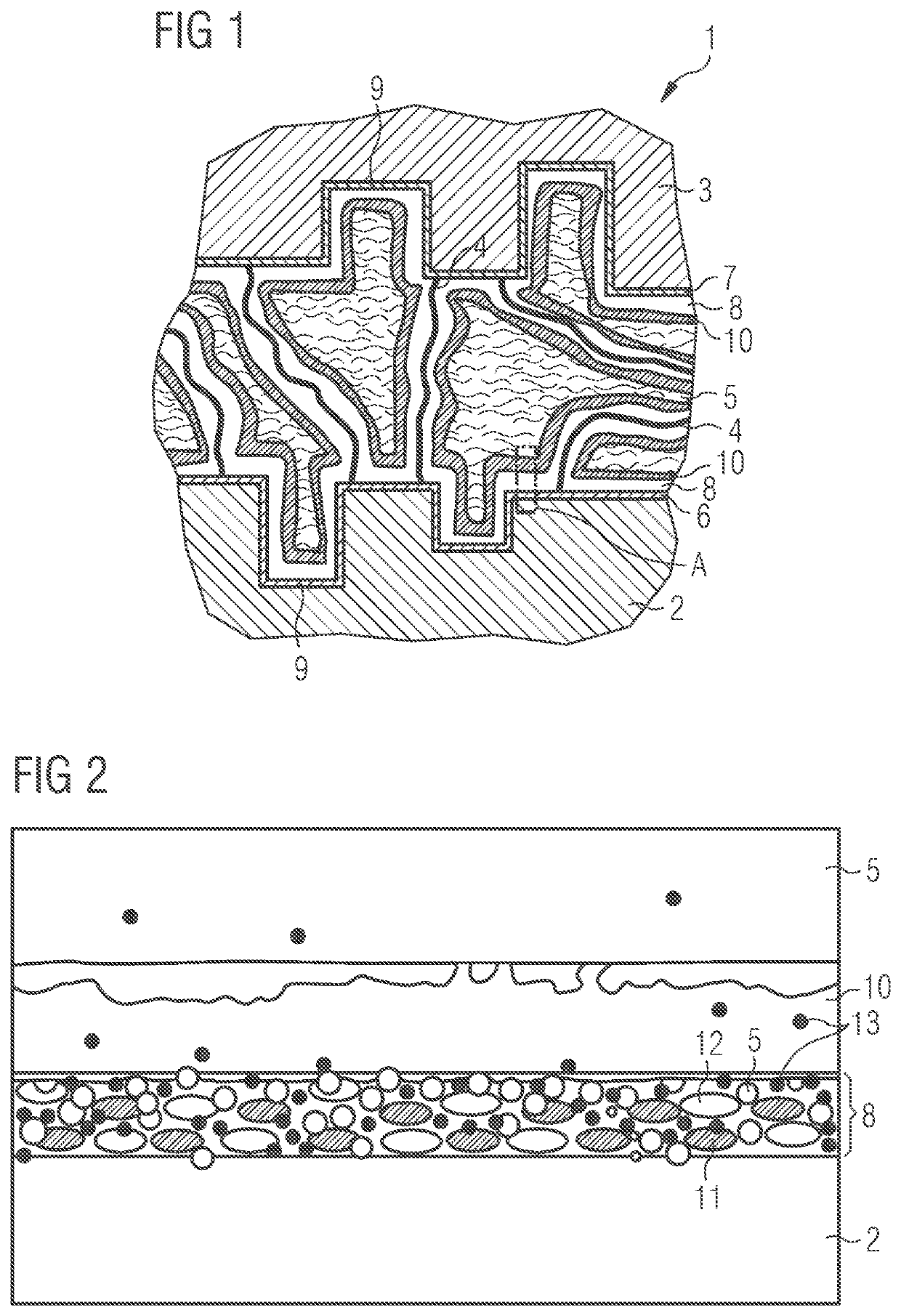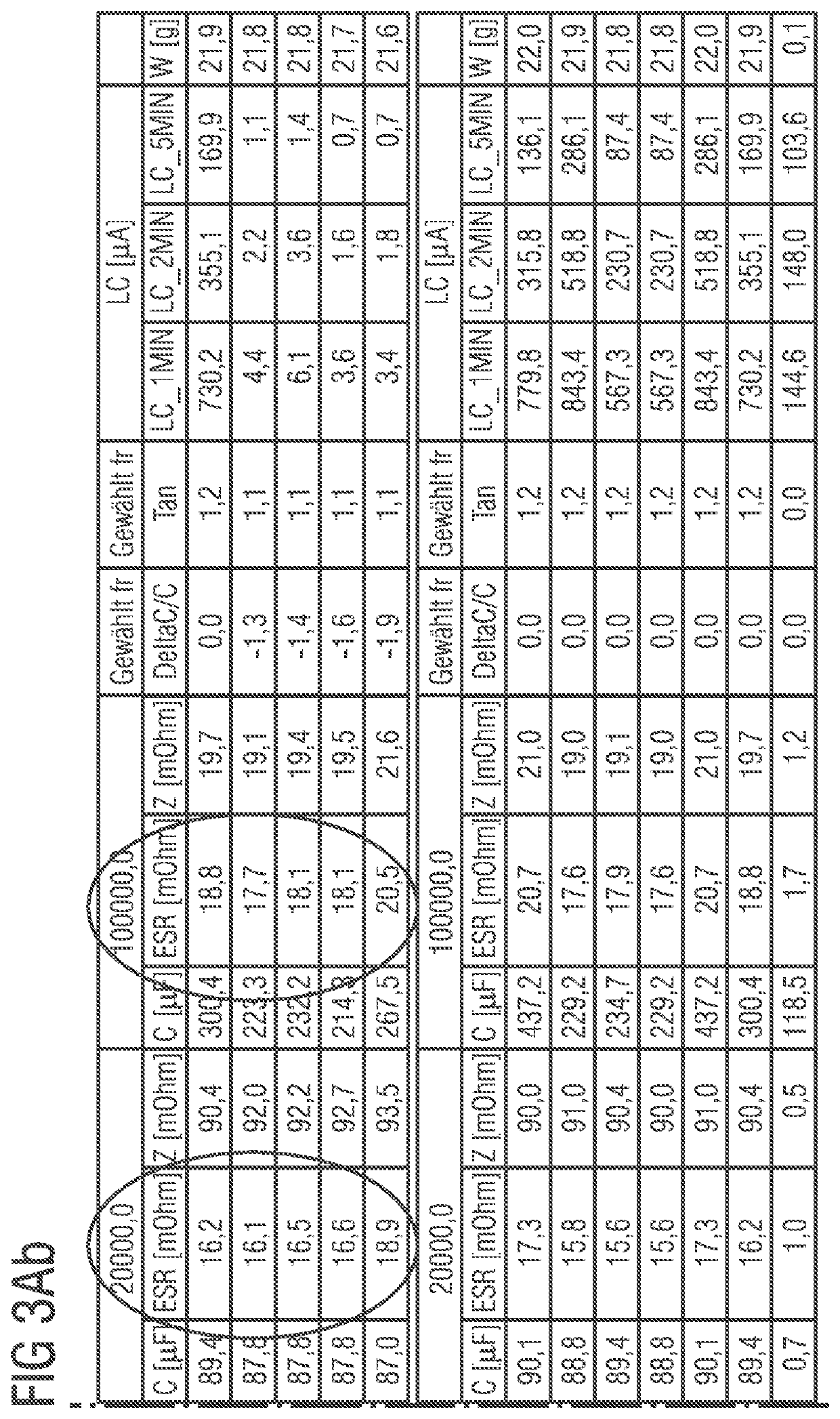Electrolytic capacitor
a technology of electrolytic capacitors and polymers, applied in the field of electrolytic capacitors, can solve the problems of insufficient thickness of oxide layers, inability to generate oxide layers that are thick enough to withstand, and danger of solvents, so as to increase the esr value, and reduce the conductivity of polymer layers.
- Summary
- Abstract
- Description
- Claims
- Application Information
AI Technical Summary
Benefits of technology
Problems solved by technology
Method used
Image
Examples
Embodiment Construction
[0042]FIG. 1 shows a structure of an electrolytic capacitor 1 in a schematic view. FIG. 1 represents a purely schematic drawing which is not true to scale. The electrolytic capacitor 1 is a hybrid polymer capacitor.
[0043]The electrolytic capacitor 1 comprises an anode foil 2 and a cathode foil 3 which are wound to form a winding body. The anode foil 2 and the cathode foil 3 may comprise aluminum or consist of aluminum.
[0044]The anode foil 2 has a so-called etched-structure. Thus, pits 9 are formed in a surface of the anode foil 2. Further, pits 9 are also formed in a surface of the cathode foil 3.
[0045]The surface of the anode foil 2 facing towards the cathode foil 3 has been oxidized. Thus, an oxide layer 6 is formed on the surface of the anode foil 2 facing towards the cathode foil 3. The oxide layer 6 may have a thickness in a range from 50 nm to 700 nm. The oxide layer 6 acts as the dielectric of the electrolytic capacitor.
[0046]Further, a surface of the cathode foil 3 facing to...
PUM
| Property | Measurement | Unit |
|---|---|---|
| thickness | aaaaa | aaaaa |
| thickness | aaaaa | aaaaa |
| voltage | aaaaa | aaaaa |
Abstract
Description
Claims
Application Information
 Login to View More
Login to View More - R&D
- Intellectual Property
- Life Sciences
- Materials
- Tech Scout
- Unparalleled Data Quality
- Higher Quality Content
- 60% Fewer Hallucinations
Browse by: Latest US Patents, China's latest patents, Technical Efficacy Thesaurus, Application Domain, Technology Topic, Popular Technical Reports.
© 2025 PatSnap. All rights reserved.Legal|Privacy policy|Modern Slavery Act Transparency Statement|Sitemap|About US| Contact US: help@patsnap.com



